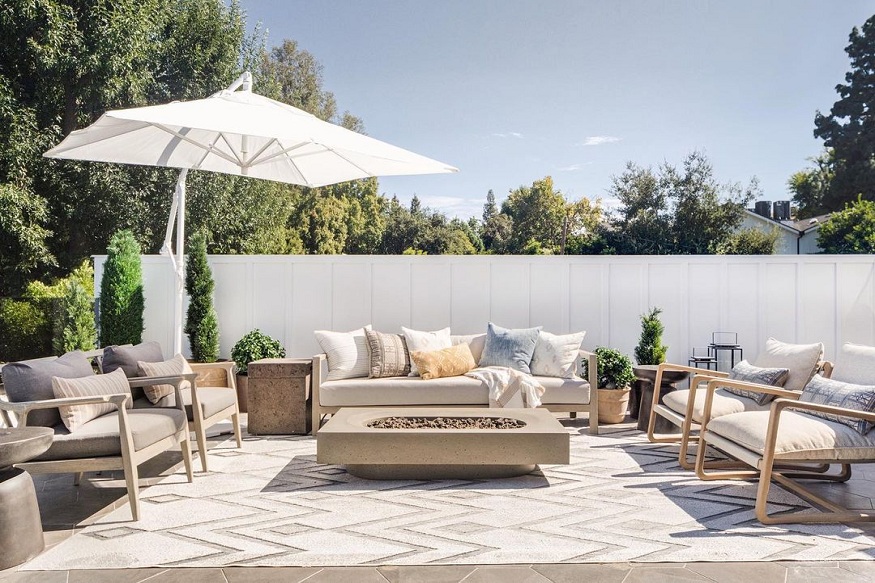A dining room is used for eating; a bedroom is used for sleeping; a restroom is used for cleaning, etc. The manner in which you design your outdoor space is entirely up to you, but there are a few fundamental guidelines to follow.
1. Forgetting It’s Outdoors, Not Indoors
Some overzealous decorators forget they are furnishing an outdoor space. You may have seen a patio where the living room sofa, chaise longue, coffee table, and even artificial plants have been moved outside. Or, they have moved the settee from the living room to the patio or backyard. Don’t even consider it.
It’s always a smart idea to strive for a smooth transition between your exterior and interior, but using the same furniture (or something very similar) is excessive
2. No Flowers or Plants
In designing an outdoor space, you believed you had accounted for every element: a fine deep-seating set, a few accent tables, and a container. What appears to be lacking?
Plants can aid in softening an outdoor space. Even a gardenia can be incorporated judiciously for a delightful evening experience when light winds stir up the fragrance.
3. Poor Furniture Arrangement
Consider seating arrangements and the creation of conversation areas when designing a patio or outdoor living space. The sofa or chairs should be near enough to facilitate conversation without bellowing while allowing sufficient space for movement. Assemble chairs around a low table for beverages and dishes.
If you place your outdoor furniture set against the walls of your outdoor chamber, there will be a large empty space in the middle, which is ideal if you intend to use the space for dancing or karaoke after dinner.
4. Colour Issues
Errors in colour design occur when either insufficient or incorrect colours are combined. The majority of available outdoor furniture features cushioning in neutral colours, such as white, tan, beige, or grey. Neutrals provide a subdued backdrop for colourful cushions and accents in a few carefully selected or preferred hues. It appears insipid or incomplete if the set is left unadorned as if it were removed from its packaging and then forgotten.
Conversely, using too many colours can be a bit overwhelming, but when they complement one another, the result can be energetic and vibrant.
5. No Accessories or Decor
Imagine going to a store to purchase one of those deep-seated, comfortable outdoor sets with two connecting sofas and corresponding ottomans. Perhaps you purchase one or two tables with frames that match the set. This set typically comprises only tan, beige, taupe, fawn, off-white, or greige pieces.
After returning home, you place the item in your outdoor room, take a step back, and ponder what is missing.
Accessories. And by this, we mean outdoor accessories, not items that can be transferred from the living room to the patio. Outdoor equipment should be impermeable and resistant to the elements.

